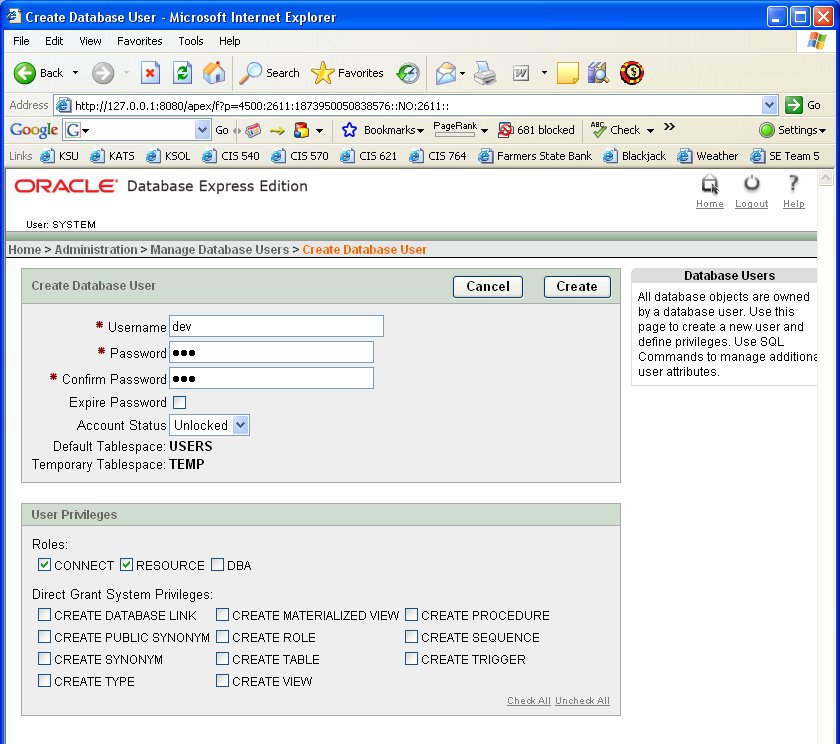

- #Oracle 10g installation manual#
- #Oracle 10g installation software#
- #Oracle 10g installation license#
- #Oracle 10g installation download#
Post InstallationĮdit the "/etc/redhat-release" file restoring the original release information.įinally edit the "/etc/oratab" file setting the restart flag for each instance to 'Y'. Start the Oracle Universal Installer (OUI) by issuing the following command in the Disk1 directory.ĭuring the installation enter the appropriate ORACLE_HOME and name then continue with the installation. If you are using X emulation then set the DISPLAY environmental variable. #LD_ASSUME_KERNEL=2.4.1 export LD_ASSUME_KERNELĮdit the "/etc/redhat-release" file replacing the current release information (Fedora Core release 1 (Yarrow)) with the following. LD_LIBRARY_PATH=$ORACLE_HOME/lib:/lib:/usr/lib export LD_LIBRARY_PATHĬLASSPATH=$ORACLE_HOME/JRE:$ORACLE_HOME/jlib:$ORACLE_HOME/rdbms/jlib export CLASSPATH

Oracle UltraSearch is another way to index and search database tables, websites, files, Oracle Application Server portals, and other data sources.
#Oracle 10g installation manual#
ORACLE_HOME=$ORACLE_BASE/product/10.1.0/db_1 export ORACLE_HOME Oracle Text is set up in the SYSAUX tablespace (with CTXSYS as schema owner) by default unless you create a separate tablespace and do a manual installation of Oracle Text in that tablespace. ORACLE_BASE=/u01/app/oracle export ORACLE_BASE Login as the oracle user and add the following lines at the end of the ".bash_profile" file. Login as root and issue the following command.
#Oracle 10g installation software#
SetupĬreate the directories in which the Oracle software will be installed. Note by Kent Anderson: In the event that pam_limits.so cannot set privilidged limit settings see Bug 115442. Run the following command to change the current kernel parameters.Īdd the following lines to the "/etc/security/nf" file.Īdd the following line to the "/etc/pam.d/login" file, if it does not already exist.
#Oracle 10g installation download#
# semaphores: semmsl, semmns, semopm, semmni Oracle Database 10g (10.1.0.2) Installation On Fedora Core 1 Download Software.
#Oracle 10g installation license#
Not being able to productionise it on Oracle 10g R2 with the support license covering it is what bugged me then. Definitely installing Oracle Apex on Oracle 10g with EPG (for development) is brilliant.

I really like the all-in-one-box approach of Apex. I really want everything in the database. I agree with your reasons on using EGP on 10g too. If you are installing from network or hard disk, click setup.exe in the installation folder. I too use it the way you say on my development boxes as well. Installing Oracle 10g database software : Insert Oracle CD, the autorun window opens automatically. A bit unfair and silly of me, I admit, especially when Apex is such a good system.

And realising "is not supported!" just upset me, and decided to blog about it that way. But, the thing which put me off most was that I was wanting to use Apex with EPG on some of our production systems at the time which were Oracle 10g R2. You are correct, I got EPG to work on Oracle 10g R2 with the change on the XDB authentication setting as well, at the time. Yeah reading back my post I found it to be a bit too negative myself.


 0 kommentar(er)
0 kommentar(er)
